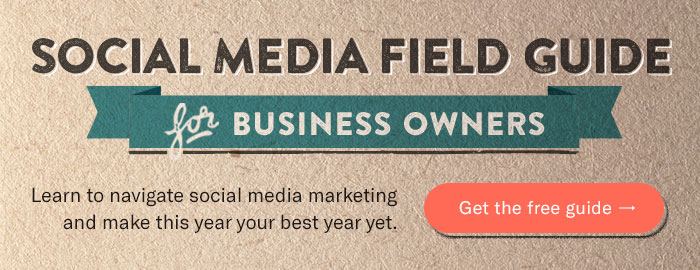Brand, branding, a name brand. If you run your own business, then you’ve heard all of these terms and more. You know you need to “brand” yourself, but what does that mean? How do you go about building your brand? A great definition is this one:
“Branding is the art of aligning what you want people to think about your company with what people actually do think about your company. And vice-versa.” —Jay Baer, Convince & Convert
This definition captures the fact that you, as a business owner, have a role in building your brand, but also acknowledges that your customers and the general public do too. A brand is a conversation, not a monologue. The best brands engage their audience, motivate action, and keep people coming back for more.
Bonus Content: Get a copy of our Marketing Survival Kit.
If you want to improve building your brand, here are five questions to ask to help strengthen any weak spots.
1. Why does your brand (company, service, etc.) exist?
This could be rephrased as: What is your mission, or what is your purpose? Fundamentally, you need to understand and explain why you are here, what you do, and for whom and why this matters. Ask yourself “so what” after any statement to make sure you’re making the strongest case for your brand that you can.
Your core values are the foundation for your mission/purpose; they are your guiding light.
When presented with a new opportunity, companies should ask themselves: Does this align with my company’s core values?
When faced with a challenge, similarly, you should ask yourself: What response aligns with my core values?
Simon Sinek recommends businesses start with “why” in this popular TED Talk because “people don’t buy what you do, they buy why you do it.”
2. What value do you offer?
In other words, what do you do differently? Do you offer a product or service better, cheaper or more innovative than your competition? When you understand what sets you apart, you can communicate it clearly with your potential and current customers and motivate them to patronize your business.
Here are 31 value propositions that stand out. My favorite is Pinterest (number 18). One could argue that the name Pinterest is confusing if you’ve never heard of it before, but their highly visual homepage, clear call to action and the words “a few (million) of your favorite things” help you understand what this site is and what you can do with it.
3. What does your audience need?
You understand your customers’ needs, aspirations, and motivations. You know how your company answers these needs, and you’re able to clearly communicate how you do this. You understand whom you serve, and how you improve their experience with every brand touchpoint to inspire loyalty.
Dove’s Real Beauty campaign has multiple facets, including a video in which a forensic artist draws women. First, he uses their descriptions of themselves, and then he uses the descriptions of the same woman from a stranger. The women realize they are much more critical of themselves than strangers are.
In addition to videos and ads, the campaign includes a collaboration with the Girl Scouts of America. Ultimately, the campaign address self-esteem and insecurity, and Dove arrived at this direction after researching the issues that women face and creating campaigns that address those issues with respect and compassion.
4. Are you consistent?
On a practical level, this includes being consistent with elements like your name, colors, tagline, and other assets. At a higher level, you have developed messaging explaining who you are, your company’s value, and how you answer your customers’ needs. And you’re consistent with this messaging. You don’t send your audience conflicting messages with confusing calls to action.
The best brands have a strategy for communicating with their customers. Because they are consistent, they don’t waste their audience’s time. They always consider their customers’ needs and use this approach when communicating.
These 15 brands are consistent in telling their brand story, and they achieve it across a variety of assets and channels. One of my favorites is charity: water, and clearly, their marketing is a favorite with millions of others, including donors and celebrities.
5. Are you willing to evolve?
Although this may seem inconsistent with number 4, the best brands always evolve. The world changes too quickly for any company to remain stagnant and think that they will continue to succeed. Technology, communication, delivery—these methods are changing daily and we all have to evolve to keep up.
Let’s look at Netflix. First known as a business that offered physical DVDs and streaming content for a monthly fee, they took a step into content development in 2013. They used data to determine that House of Cards and Orange Is the New Black would appeal to their customer base. They have seen their profits continue to rise year after year and have produced countless binge-worthy shows and movies from their original content.
Start Building Your Brand
Answering the five questions above will help you make a stronger case for your brand to your customers. The answers will also help you define who you are and what you stand for. As a result of being consistent with both your actions and your message, you will create trust with your audience over time, paving your way to success. Want more help building your brand? Let us show you how!
Updated: 11/14/17; Originally Published: 9/18/14



![Better Email Etiquette Equals Better Marketing Results [16 Rules]](https://www.outboundengine.com/wp-content/uploads/shutterstock_411184843-1-400x250.jpg)

